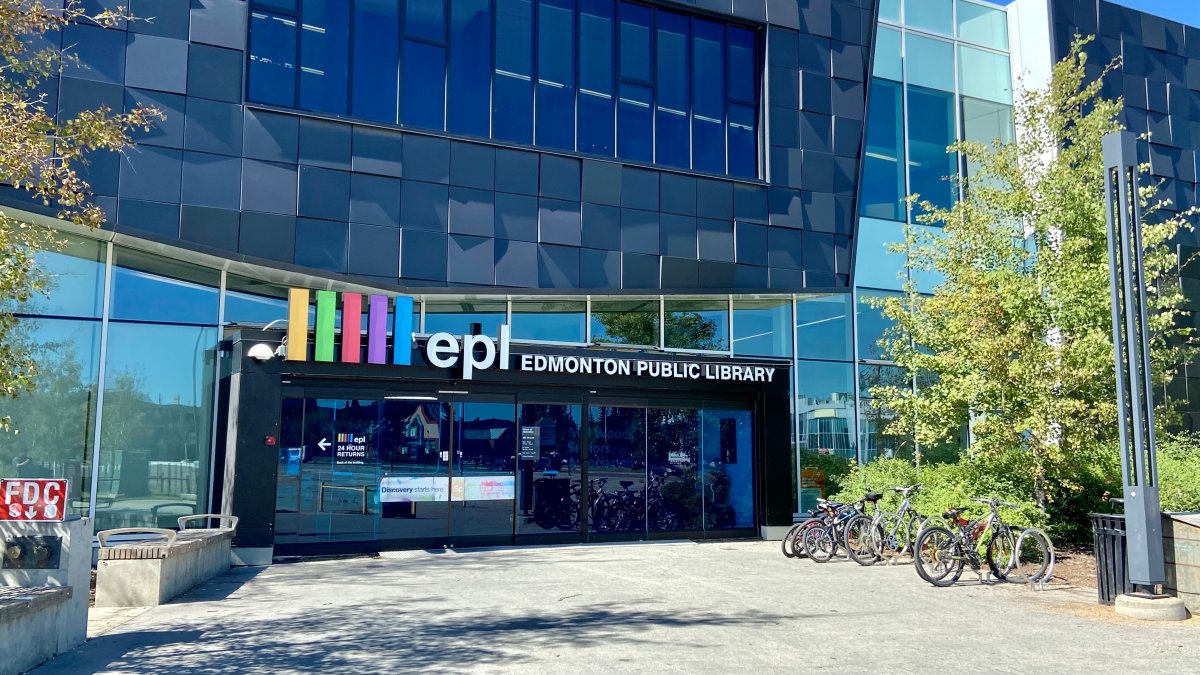Almost $1.5 million in Edmonton Public Library (EPL) funding went to dealing with the effects of homelessness, addiction and mental illness in 2022, according to a preliminary report from the city.

Ward papastew Coun. Michael Janz requested the information from city administration when EPL requested more funding during budget deliberations at the end of 2022.
He said this is one example of cities having to deal with a problem that is supposed to be under provincial jurisdiction.
“Whether it’s shopping malls having to pay for more security, whether it’s insurance premiums going up for residents because of vehicle break-ins or a social disorder, whether it’s the library having to incur an additional $1.5 million to go towards dealing with the overdose epidemic,” said Janz.
“Since 2019, we’ve seen costs have been downloaded onto the city of Edmonton and the library is no exception here.”
The report contains rough data up to about Dec. 6, 2022, and says since there is usually an increase in incidents during the winter months, the numbers are expected to be slightly worse than what the report says.
The money goes toward security, naloxone, washroom attendants, outreach workers and responding to opioid overdoses. Some also goes to “incident management,” which the report defines as time spent on dealing with disorder, which added up to the equivalent of a full-time job.

EPL said some security was hired for general work — like locking and unlocking doors — not dealing with social disorder.

Get weekly health news
There were about 570 incidents of “customer distress” recorded in the report. That category includes opioid overdoses, of which there were 77 in EPL branches.
“Ever since the UCP closed the safe consumption sites, we’re seeing other places like transit or the library becoming a safe consumption site and that’s not OK,” said Janz.
The province has closed multiple supervised consumption sites across the province, instead choosing a recovery-centred approach. There are currently three supervised consumption sites in Edmonton. The province says there has been no reduction in service capacity, saying hours have increased at supervised consumption sites in the city.
Downtown Edmonton’s Stanley A. Milner library reported the highest number of incidents last year — 1,400, or 24 per 10,000 visits. The Highlands branch had 20 incidents per 10,000 visits.
The library’s CEO said the issues seen at EPL are the same ones facing every library in North America.
“Folks who pick libraries as a career are passionate about serving those folks from all walks of life, and particularly those who may be less fortunate. And there’s a great deal of compassion in terms of our staff, and they want to make a difference in people’s lives,” said Pilar Martinez.

Martinez said it’s important not to extrapolate the data and that the solutions to the issues are complex, needing collaboration with community organizations and all levels of government.
“There’s no doubt this is impacting our staff, the services and so on, and we need creative, multidimensional (solutions) … it’s government, it’s agencies. It’s us as individuals to come up with some creative solutions that we can get to help make this better,” she said.
Janz said those without a home gravitate towards libraries because they’re a free, warm place to hang out when they’re kicked out of overnight shelters in the morning.
“The library should not be a drop-in centre. We should have actual drop-in centres where people can get podiatry, get career support, get help with their resume, meet with a therapist,” he said.
- Jasper mayor says CN Rail relocation will be devastating: ‘Deeply disappointed’
- Retired Quebec teacher buys winning lottery ticket at last minute, wins $40M
- N.B. election: Higgs went to ‘very dark place’ with Liberal joke, opponent says
- GM, Volvo, Land Rover vehicles among those in big recall. What to know
A spokesperson for Minister of Mental Health and Addictions Nicholas Milliken said the province is not downloading costs to the city and the recently formed public safety task force will “dramatically increase” access to support for addiction and homelessness.
“Over the next two years, our government is investing $82 million in Edmonton, including $63 million for addiction and mental health services and $19 million for shelter spaces and other housing supports,” said Colin Aitchison.
Aitchison said the task force will increase capacity for addiction treatment, build harm reduction and recovery outreach teams, expand medical detox services, and provide mental health and addiction treatment in correctional centres, though a timeline for these initiatives hasn’t been set yet.
“In terms of funding, provincial funding for services that reduce harm, including supervised consumption services, has increased by nearly 60 per cent since 2019,” he said.









Comments